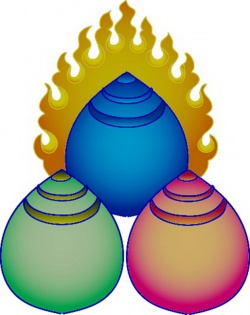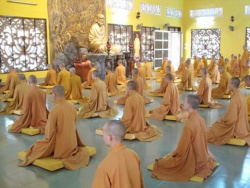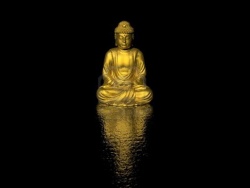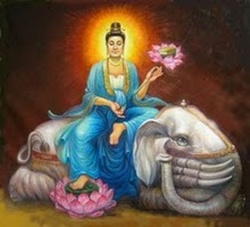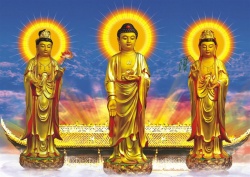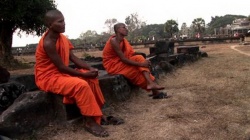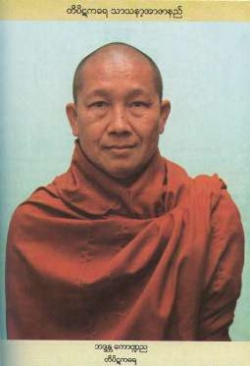Tipitakadhara Sayadaws Of Myanmar ( Burma ) In Five Decades
- Tipitaka Titles
- Tipitakadhara =Bearer of the Tipitaka (‘recitation or oral’),
- Tipitakadhara Tipitakakawida =Bearer of the Tipitaka (‘oral’ and ‘written’),
- Maha Tipitakakawida =Passing the ‘oral’ and ‘written’ with distinction,
- Dhammabhandagarika =Keeper of the Dhamma Treasure.
The above Titles are being awarded to the successful Buddhist monks out of over 400,000 members of the Sangha in the Union of Myanmar (Burma) if the candidates can recite Pali Texts of (8026) pages of Tipitaka canons (more than 2.4 million words in Myanmar Pali) and the written portion of over (200) books of Pali Texts, Athakatha (Commentaries) and Tika (Sub-Commentaries) of Tipitaka Canons respectively
Other yearly examinations being held regularly in Myanmar (Burma) with a view to promoting and flourishing the Pariyatti Sasana (Learning the Buddha’s teachings) mainly contributing to the purification, perpetuation and propagation of the Buddha Sasana throughout the world are : — (2) Dhammacariya Examination (3) Pathamagyi Examination (4) Pathamalat Examination (5) Pathamange Examination (6) Abhidhamma/Visudhimagga Examination (only for Laymen and Nuns) and (7) Five Nikaya Examination.
The Tipitakadhara Tipitakakovida Selection Examination is the most extensive, most difficult and profound and highest, and so it has been separately held since 1949 (1310 ME). Buddhist monks who wish to sit for this Sacred Tipitakadhara Tipitakakovida Selection Examination must have passed at least the Pathamagyi Examination. In fact, the Sacred Tipitakadhara Tipitakakovida Selection Examination is quite different from other religious Examinations because the candidates who will sit for this examination must have to take (33) days. They have to meet both oral and written portions as prescribed.
Only candidates who have got through both oral and written portions of the Sacred Tipitakadhara Tipitakakovida Selection Examination will be presented the Title of Tipitakadhara Tipitakakovida and candidates who have got through the oral portion will be presented the Title of Tipitakadhara. It is further learnt that only (11) Sasana Azanis (Religious Heroes) distinctively emerged during (56) years of the Sacred Tipitakadhara Tipitakakovida Selection Examination from 1949 to 2004 (1310 to 1366 ME). In fact, over ten-thousand Buddhist monks appeared for this sacred Examination during the period of (56) years. Out of them, only (11) distinctively got through the oral and the written portion of Pali Canons and other Pali Texts during the period of (56) years.
Tipitakadhara Selection Examination is the most extensive, most difficult and profound and highest. No one passed any of the categories in 1948 when it was first held in Rangoon (now Yangon) just after the country gained Independence from British Rule. The aim of the examination was to promote the emergence of the outstanding personalities who can memorize and recite the whole of the Tipitaka.
It is the longest examination in the world and the entire examination is spread over five years.
In the first and second year, the candidates are examined in Vinaya Pitaka (2260 Pages) lasting a total of 20 days.( 3 days each for 5 volumes plus 5 days for the written part covering the Commentaries and Sub-commentaries.
In the third year the candidates are examined in 3 volumes of the Sutta Pitaka (779 pages ). In the fourth and the fifth years, the examination on the first five (1390 pages) and the last two (3597 pages) of seven volumes of the Abhidhamma Pitaka is arranged. The total length of the examination used to be four years before.
The first successful candidate was Venerable U Vicittasarabhivamsa, who was later known as the ‘Mingun Sayadaw‘. He passed the Vinaya part in the 1950 Examination. In 1953 he completed the final part at that time of the Pathika Vagga of the Sutta Pitaka and became the first ever ‘Tipitakadhara’ in Myanmar (Burma) at the age of 42 and his achievement was recorded in the Guinness Book of Records. Since then, more and more outstanding monks have been awarded full titles for their fabulous memory.
The latest examination was the 56th Tipitakadhara Tipitakakovida Selection Examination of 2004, held at Vizayadhamma Hall on Kaba Aye Hillock, Yangon from 28 December 2003 to 29 January 2004, and it took 33 days. It is learnt that altogether (184) Buddhist monk candidates appeared for the 56th Tipitakadhara Tipitakakovida Selection Examination and out of them, only two candidates distinctively got through both the oral portion of Pali Texts of (8026) pages and written portion of Pali Texts of over (200) books, and one through the oral portion and (79) through respective portions of Pali Texts as prescribed.
The amazing list of these great monks is as follows.
Title Holders
|
Titles* | Year | Age (First Title) |
| Ven. Vicittasarabhivamsa | 1,3,4 | 1953 | 42 |
| Ven. Nemainda | 1,2,4 | 1959 | 32 |
| Ven. Kosala | 1,2,4 | 1963 | 36 |
| Ven. Sumingalalankara | 1,2 | 1973 | 27 |
| Ven. Sirinandabhivamsa | 1,2 | 1984 | 42 |
| Ven. Vayameindabhivamsa | 1,2 | 1995 | 39 |
| Ven. Kondanna | 1 | 1997 | 55 |
| Ven. Silakhandabhivamsa | 1,2 | 1998, 2000 | 34 |
| Ven. Vamsapalalankara | 1,2 | 1998, 2000 | 32 |
| Ven. Eindapala |
1,2 | 1362, 1365 ME | 43 |
| Ashin Sundhara |
1,2 | 1362, 1365 ME | 48 |
| Ven. Indhacariya |
1 | 1365 ME | – |
(1362 – 1363 ME=Year 2001) * | |||
Total Numbers of Successful Candidates (1948-1998)
| |
| Whole of Tipitaka (Tipitakadhara) | 9 |
| Two and a Half out of 3 disciplines | 9 |
| Two out of 3 disciplines | 21 |
| One out of 3 disciplines | 71 |
TIPITAKADHARA & TIPITAKAKAWIDA SAYADAWS
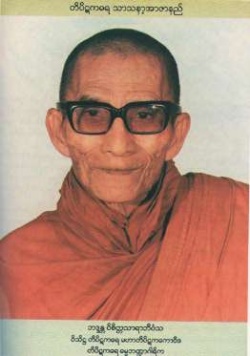 Ven. Vicittasarabhivamsa Visittha Tipitakadhara Mahatipitakakovida Dhammabhandagarika |
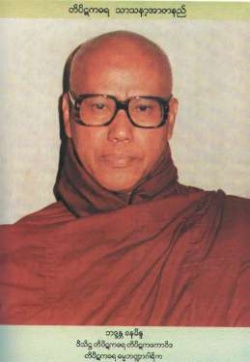 Ven. Nemainda Visittha Tipitakadhara Tipitakakovida Dhammabhandagarika |
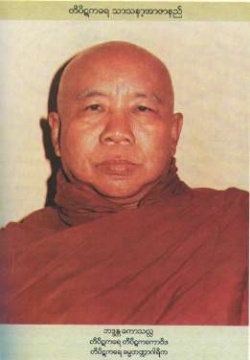 Ven. Kosala, Tipitakadhara Tipitakakovida Dhammabhandagarika |
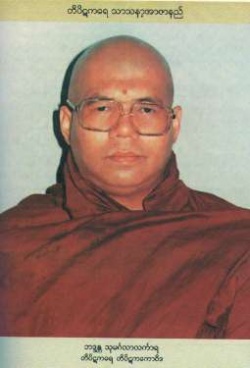 Ven. Sumingalalankara, Ph.D, Tipitakadhara Tipitakakovida, |
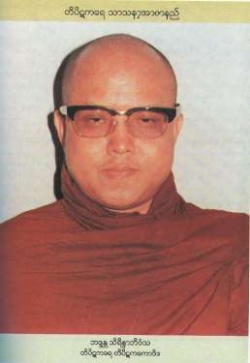 Ven. Sirinandabhivamsa Tipitakadhara Tipitakakovida |
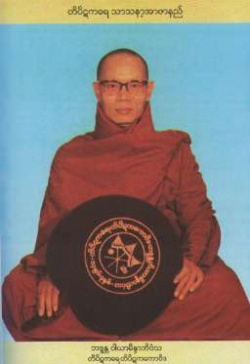 Ven. Vayameindabhivamsa, Tipitakadhara Tipitakakovida |
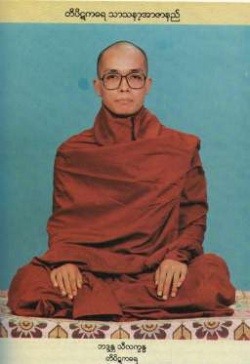 Ven. Silakhandabhivamsa (2000) |
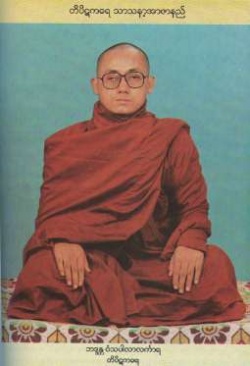 Ven. Vamsapalalankara (2000) |
TIPITAKADHARA SAYADAW
Ven. Kondanna
(1997)
Ven. Indapala
(2004)
Ven. Sundhara
(2004)
Ven. Indhacariya
(2004)
One may question the wisdom of arranging this highly stressful examinations now that we can put the Tipitaka texts on the CD-Roms and there is no question of the Tipitaka texts disappearing from this world. But the actual rewards of the whole examination is reflected in the emergence of thousands of monks who has got all or some of the texts by heart and are able to help lay worshippers with their instant sermons and discourses, faster than the CD-Rom texts to appear on the Computer screen. In addition, personal human touch in the form of one two one explanation is possible if our monks know the Pali Canon and are able to transmit their knowledge with authority. So the ultimate aim of the Tipitaka Examination is to promote propagation of the Buddhist Teaching which is the noblest of all the gifts, the Gift of the Dhamma in its purest form.
